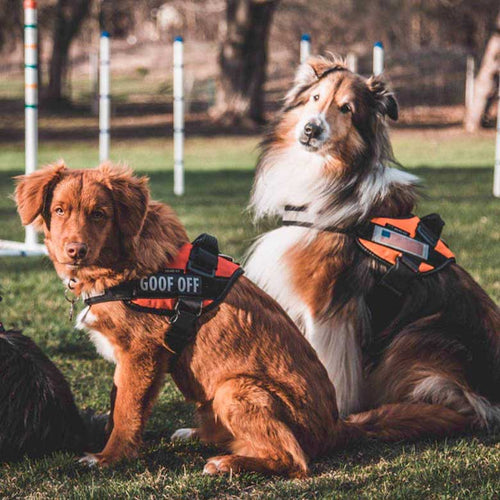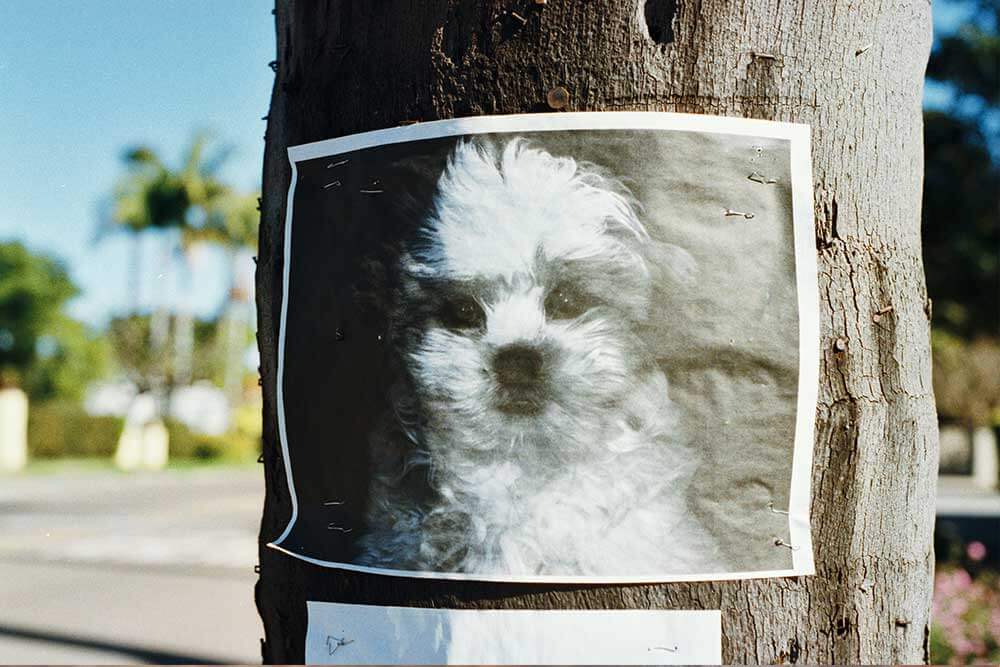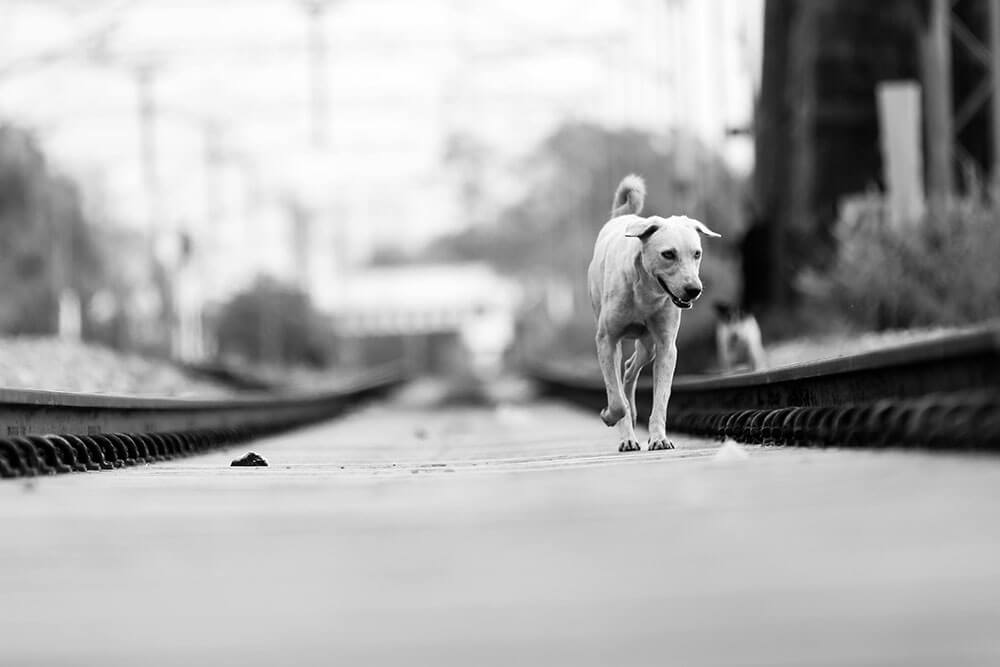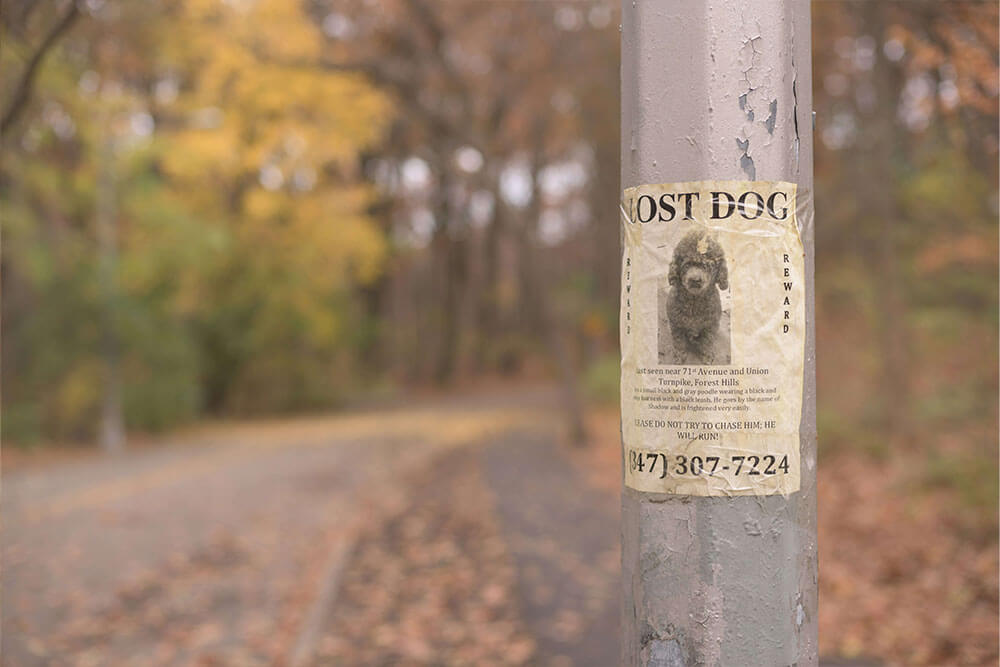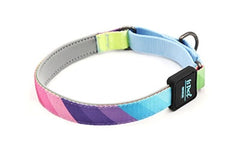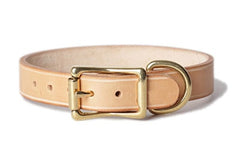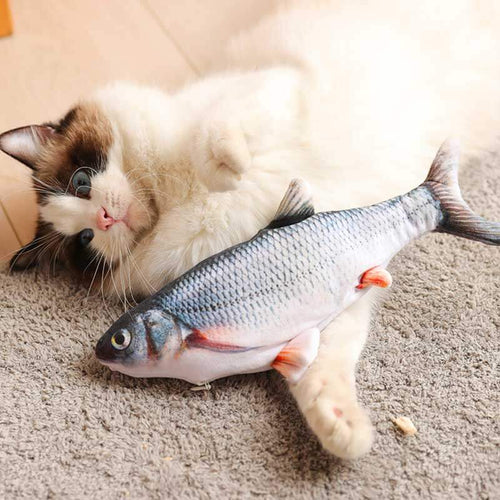What kind of collar is best for my dog? Should my dog wear a collar at home? How do I know what size collar to get my dog? What are the different types of dog collars? There are so many options, various designs and different materials – how could you possibly choose the best collar for your dog?
Collar Style
1. Traditional Buckle Collar
This is the most common collar on the market. It has holes punched in it for adjustment. It is commonly found on leather collars and nylon collar. This type of dog collars is normally durable and will securely stay on your dog, with little chance of being accidentally snagged off.
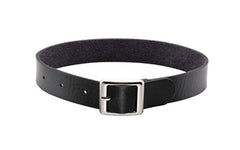
2. Quick Release Buckle Collar
This collar comes with a plastic or metal buckle that has a female and male buckle end that clips together. These are intended for pets who are walked on leashes or harnesses – usually dogs. This type of buckle is NOT recommended for very young cats or ones that are inexperienced in an outdoor environment or have a tendency to get in ‘adventurous / mischievous’ situations indoors.
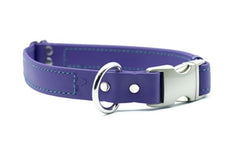
Breakaway collars referred to as “safety” collars, since they are specifically designed to automatically open / unclasp when pulled or tugged on with a sufficient amount of force. This feature is designed to prevent injury or strangulation of pets if the collar gets caught on branch, fence. Although safety is the obvious priority when choosing this type of closure for your pet’s collar, the obvious drawback to this format is that there is inherently a greater risk of your pet losing his or her collar if it’s a breakaway style.
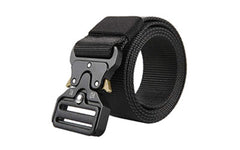
3. Martingale Dog Collar
These double-loop collars are designed to tighten when a dog pulls. These collars gently tighten against the dog’s neck if they pull, back up or spin. When the dog stops trying to pull and tug, the collar automatically loosens. They’re less likely to choke than chain collars, spike collars, and slip leashes, making them great training tools.
4. Halter / Head Collar
Head halters fit similarly to a halter on a horse; the leash attaches just under the mouth. If you’ve got a dog who pulls hard on the leash and can be hard to control, a dog head halter can really help you regain control on your walks. Head halters are NOT A MUZZLE. When fitted properly, your dog is free to open his mouth to eat, drink, pant, fetch, bark and even bite.
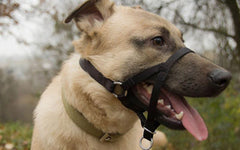
Collar Material
1. Nylon Dog Collars
Nylon is one of the most common materials for dog collars. It’s lightweight and usually less expensive. There’s a plastic or metal buckle for the holding purpose. There are plenty of varieties available in the market including colors, designs, and patterns.

Paracord dog collars are made out of nylon or polyester but the cords are braided together. This creates a sporty and durable look for your pet. The larger the dog collar, the more cords there will be incorporated into the design.
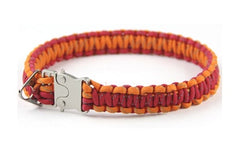
2. Leather Dog Collar
Leather collars are usually flat or rolled, and come with the metal buckles. Leather tends to cost a bit more, but can be an attractive option. The fabric will require conditioning treatment to keep it from drying out and cracking. A quality leather collar can last the life of your dog if cared for properly.
If you prefer a vegan lifestyle but something economical, a faux leather dog collar is a great choice. Faux leather dog collars are often embellished with decorative items such as charms, rhinestones, spikes or studs,. They may have fashionable textures such as crocodile, glitter, or metallic.
3. Choke Chains & Prong Collars
They are training collars that generally made of metal chain while prongs facing inward towards the dog’s neck. It is designed to control by tightening around dog’s neck. The prongs, though they look scary, have blunted points and if fitted properly do not dig into the dog’s skin. Proper fitting of the collar is very important. It should be fitted right behind your dog’s ears and be tight enough to not shift to where they can pinch the trachea.
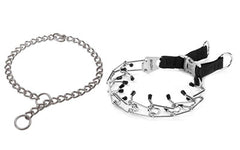
Product Recommendations
